This was published 1 year ago
The surprising things I learnt about Mediterranean food on board a ship
“It’s midday somewhere in the world” is an excuse I’ve employed rather too frequently when opening a bottle of wine pre-lunch. But today, it’s precisely 12pm when a mobile cocktail cart appears on Silver Ray’s pool deck, right alongside our sun loungers.
I’ve only just finished a very good flat white (made using Illy coffee by a well-trained barista) but it seems churlish to refuse the offer of an aperitif, especially as Shiraj, the bartender at the cart, is mixing Agua de Valencia cocktails in honour of our next port of call.
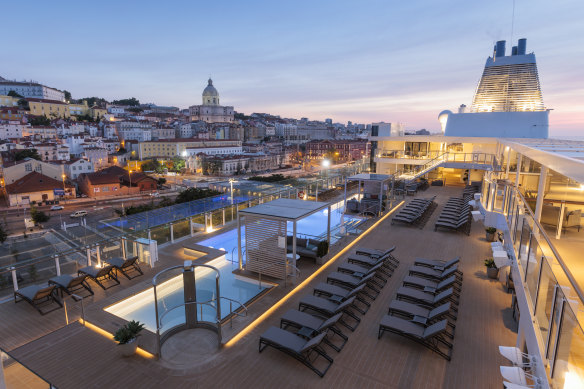
Silversea’s newest ship, Silver Ray, at port in Lisbon.
He blends freshly squeezed orange juice with small-batch oak-aged spiced gin, vodka, cava (sparkling wine) and ice. It’s fruity and refreshing – perfect for this warm summer’s day.
Having visited Lisbon, Cadiz and Malaga in quick succession, we’re luxuriating in a lazy day at sea, heading to Valencia on board Silversea’s newest ship during one of its first voyages.
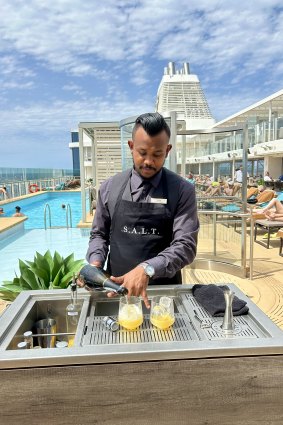
Silver Ray’s mobile cocktail cart appears poolside.Credit: Trudi Jenkins
The cocktails are part of Silversea’s unique SALT (Sea and Land Taste) culinary program, overseen by ex-editor-in-chief of Saveur magazine, Adam Sachs. SALT focuses on local, traditional dishes and drinks and has quickly become a highlight as we sail around the Mediterranean.
It showcases regional flavours on menus in the SALT Kitchen and Bar, in cooking classes and chef’s tables in the SALT Lab and on bespoke excursions that are tailored around each destination’s specialities.
We’ve already enjoyed an 11-course chef’s table dinner with guest chef Joao Sa from Lisbon’s Michelin-starred Sala, trying everything from Sa’s sardine sando to brandada de bacalao (salt-cod brandade) with confit piquillo pepper and burnt onion, to the smoothest, silkiest zucca ice-cream with roasted pumpkin-seed oil (surprisingly delicious!).
We’ve made convent sweets in the very schmick SALT Lab, all floor-to-ceiling glass and high-tech appliances, where American host Erin Montgomery explained why egg yolk features in so many Portuguese and Spanish desserts, including the famous pasteis de nata (custard tarts).
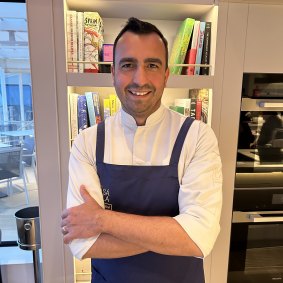
Chef Joao Sa from Lisbon’s Michelin-starred Sala, on board Silver Ray.Credit: Trudi Jenkins
Not only were egg whites traditionally used to filter locally produced red wine, removing harsh tannins, she said, but the nuns also used them to starch their habits.
So a surplus of yolks went into pastry and puddings, including the dessert featured on our first night in SALT Kitchen, travesseiros de Sintra (“pillows” of Sintra – puff pastries filled with almond-scented egg custard) and the rich tocino de cielo (a bit like creme caramel) that we try on an excursion to Jerez.
More insights come from today’s Lab class, “Prescriptivist paella, the do’s and don’ts of Valencia’s signature dish”, where many guests are surprised to learn that traditional paella is made using only 10 permitted ingredients, including beans, rabbit and chicken but never, ever, seafood. Jamie Oliver caused outrage when he added chorizo to his recipe. Valencianos call the versions he and others make with both meat and shellfish arroz con cosas (rice with things), not paella.
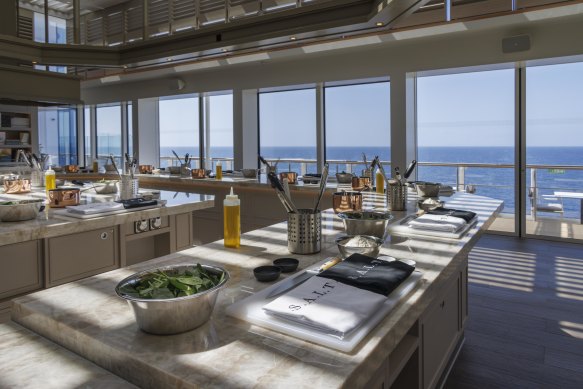
Cooking classes and chef’s table dinners take place in the airy SALT Lab.
Of course, you also need to use the correct rice, which is called bomba or rice de Valencia, and a paella pan is essential to create the crunchy socarrat layer at the bottom. (God forbid you use a slow cooker as suggested on some recipe websites.)
But we’re not here to slave over a hot stove. It’s back to the SALT Kitchen for dinner, where not just the food but the wine is matched to the region by Silversea wine ambassador Lawrence d’Almeida, a Parisian who now lives in Tuscany. On our journey, we’ll taste many different varieties selected by d’Almeida, including Douro wines in Portugal, full-bodied Priorat reds in Catalonia, and chianti classico in Tuscany.
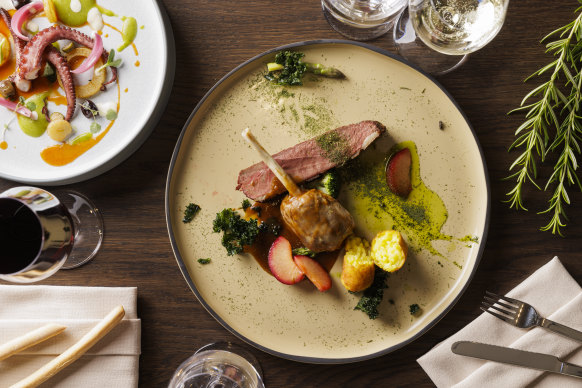
Regional flavours in the SALT Kitchen.
As Sachs says of the program: “We’re really connecting the dots in a way that allows the guest to come away with a better, deeper understanding and appreciation for the cultures of the places we’re visiting.”
And that’s what I tell myself as I order another Agua de Valencia the following day.
The details
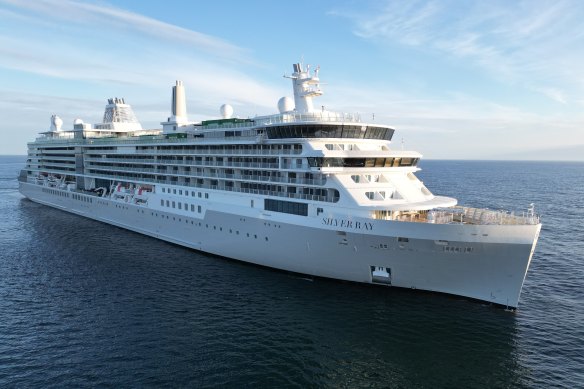
Silver Ray is the newest ship from Silversea, and is almost identical to Silver Nova.
The SALT program is available on four Silversea ships: Silver Moon, Silver Dawn, Silver Nova and Silver Ray. Silversea is currently offering savings of up to $5000 per suite (twin share) on their all-inclusive fares if you book by October 31, 2024.
See silversea.com
The writer travelled as a guest of Silversea.
Sign up for the Traveller Deals newsletter
Get exclusive travel deals delivered straight to your inbox. Sign up now.